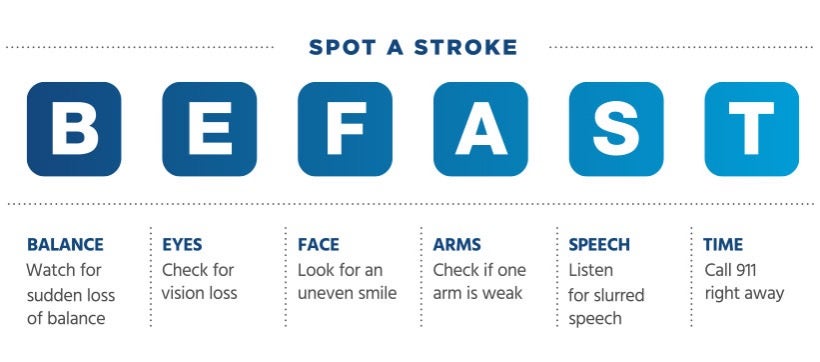Website to merge into Ochsner.org on August 8!
ochsner.org
ochsner.org
May is National Stroke Awareness Month, a great time to learn about the signs of stroke and the preventative measures you can take to ensure you’re not one of the 800,000 that occur each year. It’s the fifth leading cause of death in adults in the U.S., and a major factor for serious disabilities in those that survive.
A stroke is caused by blocked blood flow to the brain and can affect a person’s speech, movement, memory and more. It’s important to know the signs of a stroke and get help quickly. Some of the warning signs include:
Anyone can have a stroke at any age, but almost three-quarters of all strokes happen in people over 65.
Certain factors can increase your chances of having a stroke, and an estimated 80% of them can be prevented by choosing a healthier lifestyle. Here are four steps you can take today to help reduce your risk of suffering a stroke.
High blood pressure is a huge factor and can double or even quadruple your chances of stroke if not properly controlled. Monitoring blood pressure and, if it is elevated, treating it, is probably the biggest difference people can make to their vascular health and overall risk level.
Your ideal goal should be to maintain a blood pressure of less than 120/80 if possible.
Tips:
Atrial fibrillation is a form of irregular heartbeat that causes clots to form in the heart. Those clots can then travel to the brain, producing a stroke.
If you have atrial fibrillation, get it treated as soon as possible. The condition carries one of the highest stroke risks next to diabetes and high blood pressure.
Tips:
Having high blood sugar damages blood vessels over time, making clots more likely to form inside them. By keeping your blood sugar under control and following your doctor’s orders carefully, you’re already taking a huge step in reducing your stroke risk.
Tips:
From lowered blood pressure to healthier arteries and lower risk of blood clots, making overall healthier life choices can ensure that, as your body ages, your risk for stroke is severely lowered.
Tips:
It’s important to recognize the warning signs and symptoms of someone having a stroke. By acting quickly and calling 911, you can help reduce the risks of long-term and fatal damage before it’s too late.

Make May your month to schedule an appointment with a primary care provider for an annual exam and ensure you’re on the right track to a healthier life; your brain and heart will thank you!